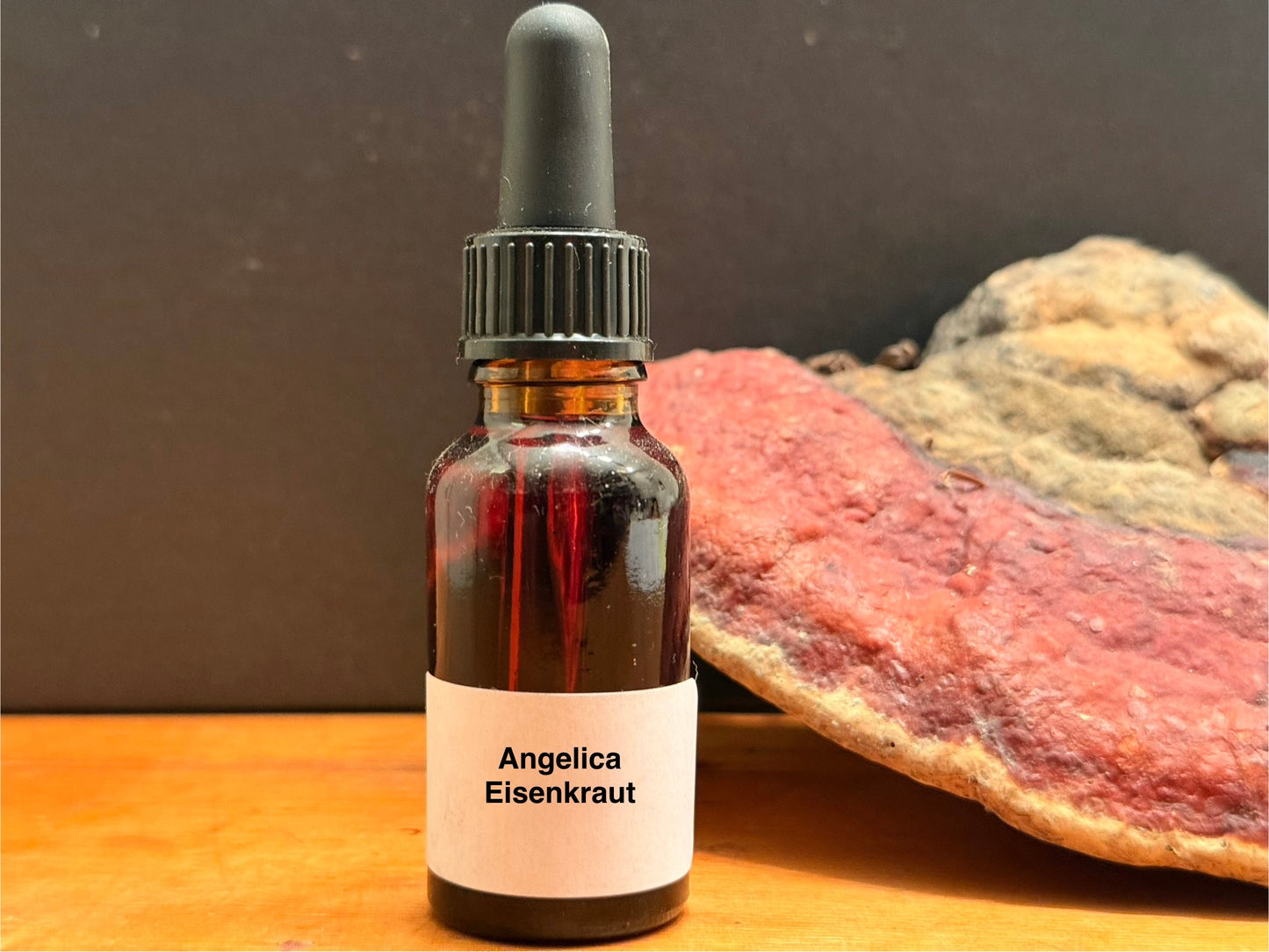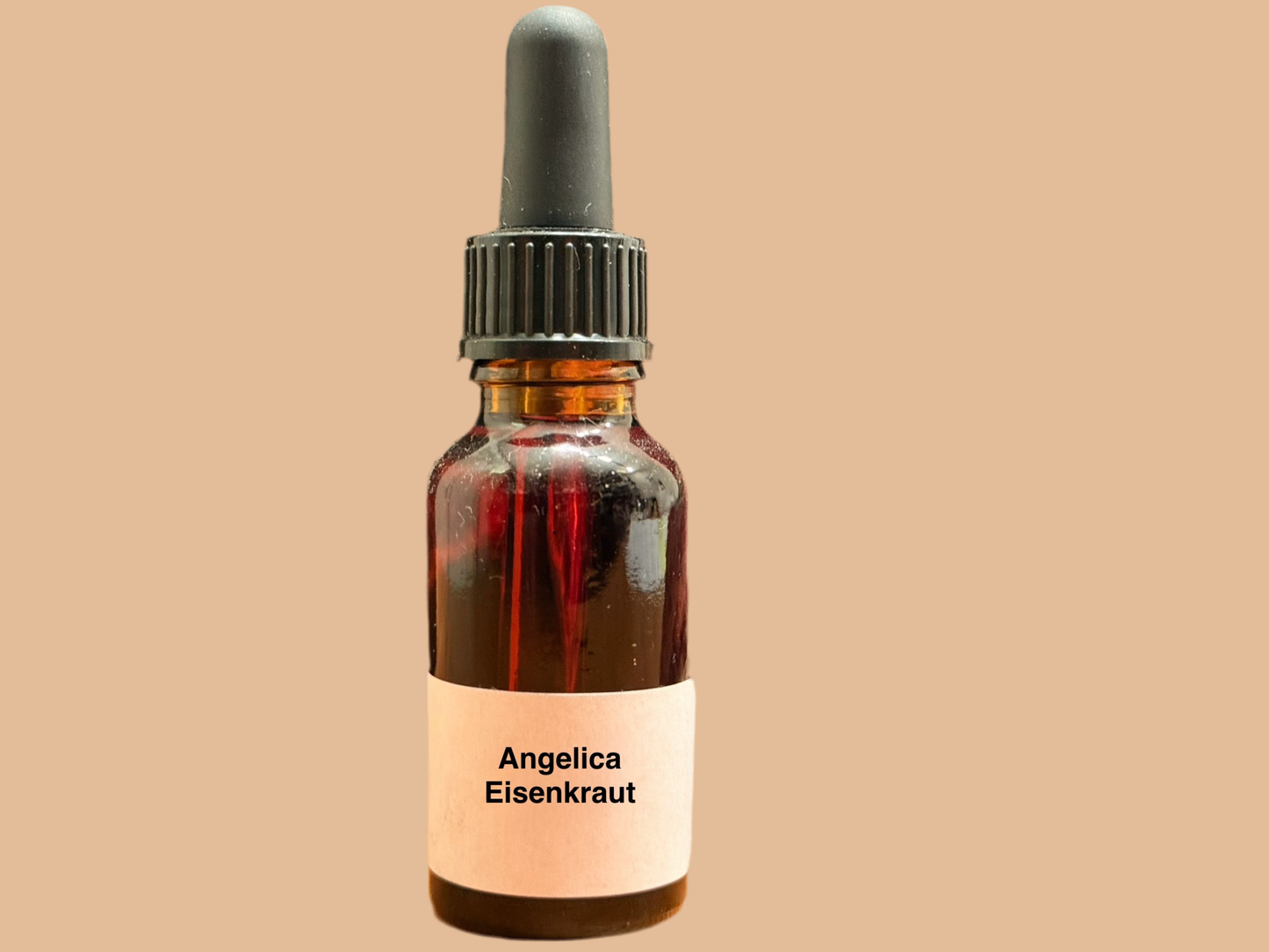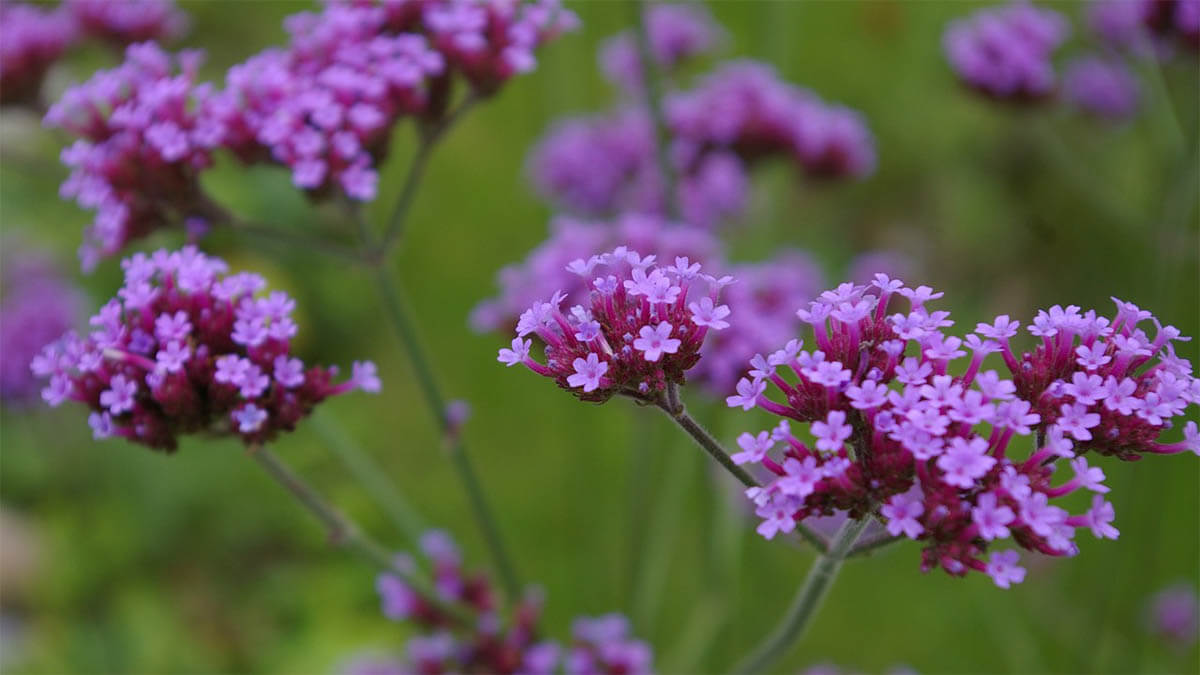Condorcito
Angelica (Eisenkraut)
Angelica (Eisenkraut)
Couldn't load pickup availability
**Angelica** refers to a group of plants in the genus *Angelica*, most notably **Angelica archangelica**, commonly known as **garden angelica** or **wild celery**. This biennial or perennial herb is native to temperate and subarctic regions of the Northern Hemisphere, particularly Europe and Asia. It has been widely used for its medicinal, culinary, and aromatic properties. Here’s an overview of the Angelica plant:
---
### **Description of Angelica**
1. **Botanical Name**: *Angelica archangelica* (most common species)
2. **Common Names**: Garden angelica, Wild celery, Holy ghost, Norwegian angelica
3. **Appearance**:
- Tall, sturdy plant that can grow up to 2–3 meters (6–10 feet) in height.
- Hollow stems with large, bright green, serrated leaves that are divided into smaller leaflets.
- Produces umbrella-like clusters of small, greenish-white or yellow flowers.
- The roots, stems, leaves, and seeds are all used for various purposes.
---
### **Historical and Cultural Significance**
- **Medieval Europe**:
- Angelica was believed to have protective and healing properties, often used to ward off evil spirits and plague.
- Its name is derived from the legend that an angel revealed its medicinal uses to humans.
- **Traditional Medicine**:
- Used in traditional Chinese medicine (e.g., *Angelica sinensis*, known as Dong Quai) and European herbalism for centuries.
---
### **Chemical Composition**
Angelica contains several bioactive compounds, including:
1. **Coumarins**: Contribute to its anti-inflammatory and antispasmodic properties.
2. **Essential Oils**: Provide its distinctive aroma and flavor.
3. **Phthalides**: Found in the roots, known for their calming and digestive effects.
4. **Flavonoids**: Antioxidants that protect cells from damage.
---
### **Medicinal Uses**
Angelica has been used in traditional and modern herbal medicine for a variety of purposes:
1. **Digestive Health**:
- Relieves bloating, gas, and indigestion.
- Stimulates appetite and improves digestion.
2. **Respiratory Support**:
- Used to treat coughs, colds, and bronchitis.
3. **Anti-inflammatory**:
- Helps reduce inflammation and joint pain.
4. **Women’s Health**:
- *Angelica sinensis* (Dong Quai) is often used to regulate menstrual cycles and relieve menstrual cramps.
5. **Immune Support**:
- Believed to boost the immune system and fight infections.
---
### **Culinary Uses**
- **Candied Stems**: The stems are often candied and used as a decorative garnish for cakes and desserts.
- **Flavoring**: Leaves and seeds are used to flavor liqueurs (e.g., Chartreuse, Benedictine), teas, and savory dishes.
- **Herbal Teas**: Dried roots and leaves are brewed into teas for their aromatic and medicinal properties.
---
### **Modern Applications**
- **Herbal Supplements**: Available in capsules, tinctures, and teas for digestive and respiratory health.
- **Aromatherapy**: Essential oil is used for its calming and uplifting scent.
- **Skincare**: Extracts are used in cosmetics for their anti-inflammatory and antioxidant properties.
---
### **Conclusion**
Angelica is a versatile and historically significant plant with a wide range of medicinal, culinary, and aromatic uses. Its unique flavor, healing properties, and cultural importance make it a valuable herb in both traditional and modern contexts. Whether used in teas, candies, or herbal remedies, Angelica continues to be cherished for its many benefits.
This product is Botanical demonstration material only and is not ment to be consumed in any form by humans or animals.






